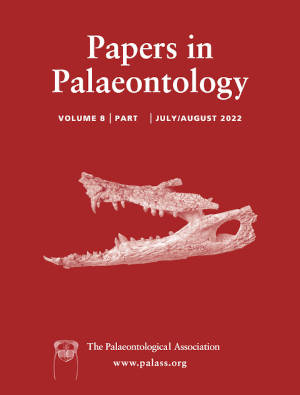Article: Chondrichthyan (Holocephali, Squalomorphii and Batomorphii) remains from the Badenian of southern Hungary (Tekeres, Mecsek Mountains): the first deepwater cartilaginous fishes from the Middle Miocene of the Central Paratethys
Publication: Papers in Palaeontology
Volume:
8
Part:
6
Publication Date:
2022
Article number:
e1471
Author(s):
Márton Szabó, László Kocsis, Emőke Tóth, Péter Szabó, Tamás Németh, and Krisztina Sebe
DOI:
10.1002/spp2.1471
Abstract
Abstract Middle Miocene (Badenian) chondrichthyan fossils collected from the Tekeres Schlieren Member of the Baden Formation at Tekeres (southern Hungary, Mecsek Mts) are described here. The chondrichthyan assemblage is exceptionally diverse and well-preserved, and consists of holocephalans, selachians and batomorphs. Nine taxa are reported for the first time from the Badenian of the Central Paratethys: Ischyodus sp., Hexanchus cf. nakamurai, Centrophorus sp., Isistius triangulus, Pristiophorus sp., Sphyrna integra, Raja cf. gentili, Dasyatis cf. pastinaca and Mobula fragilis. The fauna is characterized by many deepwater taxa, making it the first bathyal vertebrate assemblage of the Badenian Central Paratethys. However, typically shallow water, littoral forms are also present, which are worn and often broken, indicating that some of the Tekeres fauna was transported and redeposited from a shallow, coastal setting into deeper water environments. Rapid basin deepening and the resulting steep topography can be linked to ongoing rifting of the south-west Pannonian Basin. The majority of the studied chondrichthyan fauna have extant representatives in the Mediterranean, which supports an active faunal connection between the Mediterranean and the Central Paratethys via the Slovenian Corridor and the existence of a network of deepwater habitats at least along this pathway.
